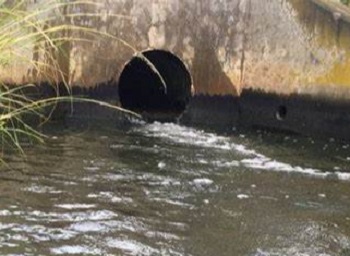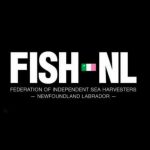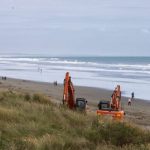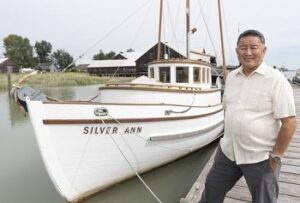Search Results for: waste water treatment plants
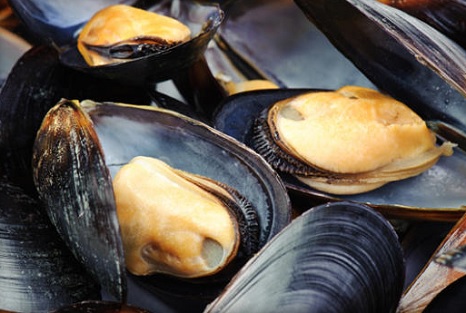
Waste Water Treatment Plants: Mussels off the coast of Seattle test positive for opioids
As more and more American communities grapple with opioid addiction, the human toll of the epidemic has grown in both scope and severity. And now, scientists at the Washington Department of Fish and Wildlife have found evidence that drug’s impact has literally flowed downstream to affect marine life, as well.,,, In three of the 18 locations, the mussels then tested positive for trace amounts of oxycodone. How, you ask? When humans ingest opioids like oxycodone, they ultimately end up excreting traces of the drugs into the toilet. Those chemicals then end up in wastewater. And while many contaminants are filtered out of wastewater before it’s released into the oceans, wastewater management systems can’t entirely filter out drugs. Thus, opioids, antidepressants, the common chemotherapy drug Melphalan — the mussels tested positive for all of them. >click to read<08:04
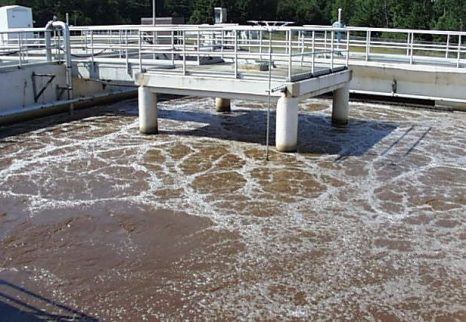
Waste Water Treatment Plants: Once home to thriving aquaculture, Great Bay is under great strain
GREAT BAY’S wonderful production of gourmet food has come to an unbelievable halt, and there’s bound to be a lot of uninformed debate on how to get those species such as clams, oysters, smelt, herring, white perch, crabs, lobsters and other multiple flora and fauna that may slip my mind.,, We’ve lost just about all of this incredible fish and game resource gradually! We’re going to get some flack from the do-gooders as to why they are gone, but when you look at the changes that have been parallel to the loss of fish, it’s been the rebuilding or refitting of the many sewage treatment plants that have been put into service that seem to be the answer to this lack of fish and game. You can see it in the lack of eelgrass beds that used to cover thousands of acres of tidal flats. These new treatment plants have filtered or poisoned most of the nutrients from the Piscataqua River and the many other rivers that serve their municipalities that dump their now super-treated effluent into the tidal water, now so sterile and lacking in nutrients and full of poison that plants and animals cannot survive. Read this article! click here 08:43
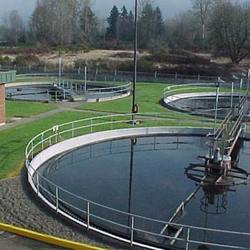
Wastewater Treatment Plants: Cocktail of drugs taint bonefish in Biscayne Bay and Keys, study finds.
A cocktail of prescription drugs, from blood pressure medications to opioids, has found its way into the flesh of South Florida’s population of bonefish, one of the state’s most sought-after game fish, according to a study released this week. “The source of this contamination is human waste and a wastewater infrastructure that has been pressed beyond its technological capability and capacity, at least to meet the demands of today,” The culprit is a sewage system designed to filter out fecal matter and other pollution, but not pharmaceuticals, researchers at Florida International University and the Bonefish and Tarpon Trust say. >click to read< 09:07 Read more about wastewater treatment plants, >click to read<
Scientists concerned over health of fish species as wastewater treatment plants fail to remove drugs
 Human antidepressants are building up in the brains of bass, walleye and several other fish common to the Great Lakes region, scientists say. In a new study, researchers detected high concentrations of these drugs and their metabolized remnants in the brain tissue of 10 fish species found in the Niagara River. The discovery of antidepressants in aquatic life in the river raises serious environmental concerns, says lead scientist Diana Aga, PhD, the Henry M. Woodburn Professor of chemistry in the University at Buffalo College of Arts and Sciences. “These active ingredients from antidepressants, which are coming out from wastewater treatment plants, are accumulating in fish brains,” Aga says. “It is a threat to biodiversity, and we should be very concerned. click here to read the story 16:57
Human antidepressants are building up in the brains of bass, walleye and several other fish common to the Great Lakes region, scientists say. In a new study, researchers detected high concentrations of these drugs and their metabolized remnants in the brain tissue of 10 fish species found in the Niagara River. The discovery of antidepressants in aquatic life in the river raises serious environmental concerns, says lead scientist Diana Aga, PhD, the Henry M. Woodburn Professor of chemistry in the University at Buffalo College of Arts and Sciences. “These active ingredients from antidepressants, which are coming out from wastewater treatment plants, are accumulating in fish brains,” Aga says. “It is a threat to biodiversity, and we should be very concerned. click here to read the story 16:57
Wastewater Treatment Plants: Pharmaceutical fish – SCSU experiments
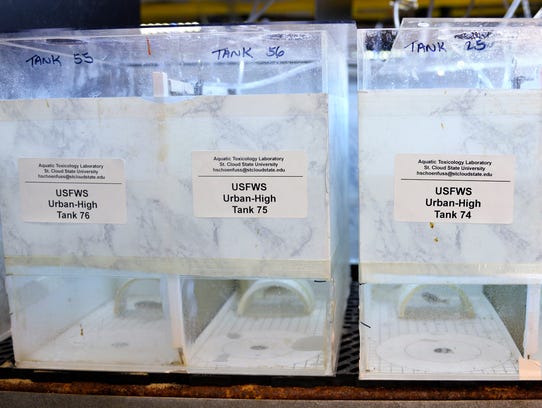
Wastewater Treatment Plants – Why we can’t get our water supply free of drugs.
Vance Trudeau, a biologist at the University of Ottawa, who has found evidence of “sexual side effects” in goldfish exposed to traces of Prozac in his lab, says “Prozac is the tip of the iceberg.” He adds that U.S. waterways are becoming a and he, along with Writer and other biologists, say that soup is becoming more difficult to identify and filter everyday. “Most sewage treatment plants have not been built with the removal of pharmaceuticals in mind because it wasn’t something people were thinking about,” Trudeau says. “To upgrade is prohibitively expensive. So pretty much anything we take ends up in the water.” Read the rest here 23:01
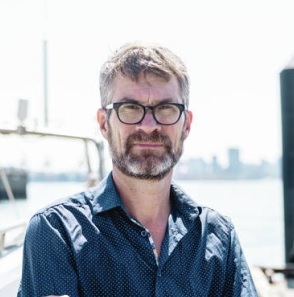
British Columbia: Pollution expert aims to create ‘water champions’
Peter Ross, an internationally recognized expert in water pollution, looks out over the sparkling waters of Burrard Inlet and sees something others do not. Invisible chemicals tend to be out of sight and out of mind, says Ross. But they leach into watercourses and into the marine food chain, creating “an invisible crisis.” “There are 500,000 chemicals on the global marketplace,” he said. Many of those will surreptitiously make their way into the food chain. Salmon heading up the Fraser River are also “basically running a gauntlet,” said Ross, “past wastewater treatment plants, past farms, past pulp mills, past refineries and storm drains.” Pollution is also an issue in drinking water,>click to read< – A global problem? 6PPD quinone: The environmental contaminant killing Coho salmon-An everyday chemical has been found to be highly toxic. Contamination of waterways is responsible for what had been the unexplained mass deaths of Coho salmon. We take a look at 6-PPD quinone, >click to read<14:39
They say The Sky isn’t Falling. I disagree! The sky has fallen, and Fishermen are paying for it. Pharmaceuticals in our water
 There’s no way around it, the headlines are disturbing. They describe fish and birds responding with altered behavior and reproductive systems to antidepressants, diabetes medication, and other psychoactive or hormonally active drugs at concentrations found in the environment. About 90% of pharmaceuticals found in the environment arrive there after being excreted. Wastewater treatment plants, meanwhile, are exploring possibilities for boosting their ability to remove pharmaceuticals from sewage. Read the rest here 13:49
There’s no way around it, the headlines are disturbing. They describe fish and birds responding with altered behavior and reproductive systems to antidepressants, diabetes medication, and other psychoactive or hormonally active drugs at concentrations found in the environment. About 90% of pharmaceuticals found in the environment arrive there after being excreted. Wastewater treatment plants, meanwhile, are exploring possibilities for boosting their ability to remove pharmaceuticals from sewage. Read the rest here 13:49
Only half of drugs, other newly emerging contaminants removed from sewage treatment
 Only about half of the prescription drugs and other newly emerging contaminants in sewage are removed by treatment plants. More than 1,400 wastewater treatment plants in the United States and Canada discharge 4.8 billion gallons of treated effluent into the Great Lakes basin every day, according to the study.The scientists reviewed 10 years of data from wastewater treatment plants worldwide to see how well they removed 42 compounds that are increasingly showing up in the Great Lakes. more@envirohealthnews 17:09
Only about half of the prescription drugs and other newly emerging contaminants in sewage are removed by treatment plants. More than 1,400 wastewater treatment plants in the United States and Canada discharge 4.8 billion gallons of treated effluent into the Great Lakes basin every day, according to the study.The scientists reviewed 10 years of data from wastewater treatment plants worldwide to see how well they removed 42 compounds that are increasingly showing up in the Great Lakes. more@envirohealthnews 17:09
Pharmaceuticals and personal care products (PPCPs) are found in surface waters worldwide. Wastewater treatment plant effluent is a major source
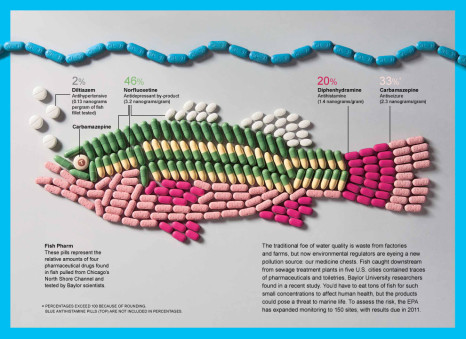 Fate and Transport of Three Pharmaceuticals in the Sacramento-San Joaquin Delta – The sharp decline of four pelagic fish species in the Delta in the last decade is just one of several indicators that the ecosystem is severely impaired. Several wastewater treatment plants (WWTPs) discharge into the Delta, directly or through tributaries. Link
Fate and Transport of Three Pharmaceuticals in the Sacramento-San Joaquin Delta – The sharp decline of four pelagic fish species in the Delta in the last decade is just one of several indicators that the ecosystem is severely impaired. Several wastewater treatment plants (WWTPs) discharge into the Delta, directly or through tributaries. Link
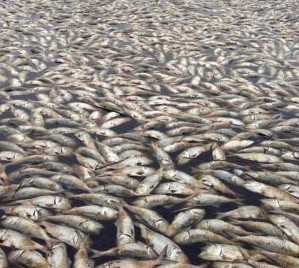
Sores, lesions: Early fish kill in Neuse worries those who use the river
State environmental crews are investigating a disturbing fish kill in the Neuse River. They’re trying to figure out why numerous schools of menhaden are breaking out in sores and dying in the river near New Bern.,,, The images are grotesque. Fish in the Neuse River swimming around with their insides hanging out.,, In a nutshell, the river is in very poor health and declining and continuing to decline,” said JoAnn Burkholder,,, Hans Paerl, said he believes pollution stirred up by Hurricane Florence could be the culprit now. And Paerl warns that water quality could deteriorate all summer if the weather is hot and dry. Scientists blame nutrient pollution from urban runoff, large industrial farms and waste water treatment plants. >click to read<11:25

Fishermen: Narragansett Bay cleanup might be doing harm
Narragansett Bay is cleaner and clearer than it’s been in decades. But after huge strides in treating wastewater and controlling storm runoff, some are asking a question that would have been unthinkable just a few years ago about what is arguably Rhode Island’s most valuable natural resource: Is the Bay too clean? Fishermen are raising the issue after seeing steep declines in numbers of flounder, lobster and other species that were once so abundant that they formed the bedrock of their industry. It has gotten bad enough that lobsterman Al Eagles says that he and others now call the Bay “Chernobyl,” a reference to the site of the devastating Soviet-era nuclear disaster. click here to read the story 09:20
Waste Water Treatment Plants: Once home to thriving aquaculture, Great Bay is under great strain – You can see it in the lack of eelgrass beds that used to cover thousands of acres of tidal flats. These new treatment plants have filtered or poisoned most of the nutrients from the Piscataqua River and the many other rivers that serve their municipalities that dump their now super-treated effluent into the tidal water, now so sterile and lacking in nutrients and full of poison that plants and animals cannot survive. click here to read the story
Gov. Hassan signs into law Great Bay shellfish restoration bill
Gov. Maggie Hassan has signed into law a bill that would allow the Fish and Game Department the closing of clam, oyster and other bivalve areas for restoration efforts in the Great Bay. (here) Why would she close them, when they are being destroyed by high nitrogen levels from run off and the dozen or so waste water treatment plants that continue to degrade the oysters and eel grass that they continue to try restoring? Get your head out of the sand, Governor. FN 09:24

Meet the super-plant from Nova Scotia’s shorelines: eelgrass
Eelgrass protects shorelines against storms, cycles nutrients and provides juvenile fish and lobster with places to hide and grow. If that’s not enough to convince people that eelgrass is a super plant, it is also many times more efficient at capturing and storing carbon than terrestrial forests.,,”If you lose eelgrass there’s nothing to replace it,” says Heike Lotze, a researcher and professor at Dalhousie University,, While protections for eelgrass can be put in place, Lotze points to a lack of understanding and recognition that what happens on land directly affects the ocean. Eelgrass is extremely sensitive to runoff (water carrying sediments and or chemicals) from land due to human activities such as development and agriculture (wastewater treatment plants). >click to read< 17:56

Scientists Struggle to Save Seagrass From Coastal Pollution
In parts of the United States and other developed countries, there is growing recognition of the importance of seagrass and its sensitivity to nitrogen-rich runoff from sewage treatment plants and other sources. Too much nitrogen can spike algae growth, which clouds the water and blocks the sunlight seagrass needs to grow. “We think this is a problem that has to be solved,”,, Communities around the Great Bay have spent about $200 million to upgrade wastewater treatment plants,,, >click to read< 13:24
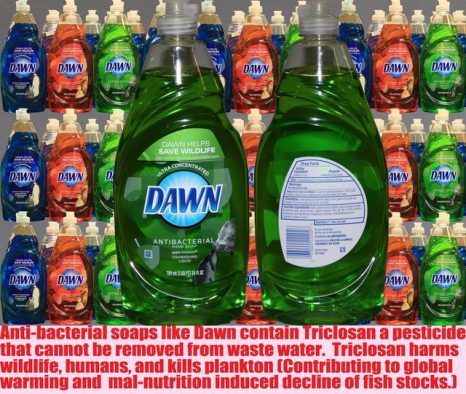
Good news for fishermen. FDA Bans Antibacterial Triclosan in soap.
Antibacterial soaps were banned from the US market on Friday in a final ruling by the Food and Drug Administration, which said that manufacturers had failed to prove the cleansers were safe or more effective than normal products. The new federal rule applies to any soap or antiseptic product that has one or more of 19 chemical compounds, including triclocarbon, which is often found in bar soaps, and triclosan, often in liquid soaps. Professor Patrick McNamara: triclosan could play a part in driving antibiotic resistance, saying, “after these chemicals are used in our homes they go down the drain to wastewater treatment plants and eventually to the environment where they can select for antibiotic resistance genes”. Read the article here American Style Environmentalism is Destroying The Environment Part 1 by JJ Johnson written May 8, 2012 – Dawn dishwashing liquid (distributed by Proctor and Gamble) has a wildlife campaign that is advertised on the bottles of soap. The bottles proudly proclaim, “Dawn Helps Save Wildlife,” and feature heart warming pictures of ducks, penguins, and even two seals kissing (My personal favorite.) Read the article here 08:50
Harper’s Seal Penis Offensive – $9M to Revive the Canadian Seal Market
 Amish Patel, Film Maker / Writer / Performer, gives us his insight to the revival of seal penis sales, utilizing the whole animal. Viagra, Big Pharma’s chemical answer to slumping members of the male anatomy, is discussed as the alternative to this natural aphrodisiac. When I heard it mentioned, all I could think of is the chemical cocktail being injected into the eco systems where our juvenile fish are declining, because of wastewater treatment plants that can’t remove the chemicals. This guy is funny, but edgy. Enjoy the video here, and demand natural enhancement! 17:46
Amish Patel, Film Maker / Writer / Performer, gives us his insight to the revival of seal penis sales, utilizing the whole animal. Viagra, Big Pharma’s chemical answer to slumping members of the male anatomy, is discussed as the alternative to this natural aphrodisiac. When I heard it mentioned, all I could think of is the chemical cocktail being injected into the eco systems where our juvenile fish are declining, because of wastewater treatment plants that can’t remove the chemicals. This guy is funny, but edgy. Enjoy the video here, and demand natural enhancement! 17:46
As Our Oceans Degrade, The Environmentalist Network Stays Focused on their Overfishing Bread and Butter
![]()
Canadian scientists warn of artificial sweeteners in oceans. It means that up to 72 metric tonnes (160,000 pounds) of sweetener are pouring into Lake Erie. Because the sweeteners — used in products like diet soda, chewing gum, yogurt and as sugar replacements in tea and coffee to avoid weight gain — cannot be broken down by the human body, the artificial sweeteners pass right through. They cannot be broken down by wastewater treatment plants either, meaning the undiluted sweeteners enter the water supply used as drinking water for humans and animals. Read the rest here 10:08
American Style Environmentalism is Destroying The Environment
Tue May 8, 2012
John Johnson
This is the first of a series of articles exploring the failing model of American Environmentalism. In the series I will be outlining the results of considerable investigation and study of the persons and organizations, whose claims of acting on behalf of the environment have fallen far short of the truth. I will also be calling attention to the current genre of environmental propaganda, where it emanates from, who is producing it, and how it’s timely influence on public opinion has been used to place a very few in control of vast amounts of natural resources. In these articles I will explain facts uncovered and ask you to challenge pre-conceived notions and consider the evidence. What I will not do, is propose theory or editorialize about intentions, I prefer to let the facts speak for themselves and will not fill in the gaps with unproven accusation. This isn’t an easy topic to write about and I have no budget and very little help with it, so any information and input from readers will be greatly appreciated.
Today a majority of people in the US consider themselves to be environmentalists, or at least environmentally friendly, and an overwhelming majority express concern for the well being of the natural world and try to do less harm to it in their lives (I am proud to be a member of the first group.) For this majority environmentalism is about how you live your life and the small decisions that help to make our world better. Many people from this group donate time and money to environmental organizations taking action however they can. Unfortunately in many cases their good intentions are high jacked by clever salesmanship, cause marketing, and a broad based use of the media that pushes the public toward actions that make people feel good and away from doing any real good. I will use a real world example that more than makes the point.
Dawn dishwashing liquid (distributed by Proctor and Gamble) has a wildlife campaign that is advertised on the bottles of soap. The bottles proudly proclaim, “Dawn Helps Save Wildlife,” and feature heart warming pictures of ducks, penguins, and even two seals kissing (My personal favorite.) When you buy bottles of Dawn with these images a donation is made to an organization that advocates for wildlife protection. This decision to spend a little extra to help wildlife feels good. Like one of the little decisions we can all make every day to make the world better. Since they use the soap to wash off birds and mammals that have been harmed by oil spills it just makes sense. I was dismayed to learn that a large percentage of the bottles contain an extremely harmful pesticide that not only harms wildlife, but is doing massive amounts of environmental damage contributing to global warming and the destruction of the marine food web, actually starving the wildlife they claim to help.
The pesticide is called, “Triclosan,” and is an anti-bacterial agent found in an increasing number of soaps and other products sold in the US. Over the last ten years it’s use has increased dramatically and since it doesn’t readily breakdown in the environment, and cannot be removed by waste water treatment, rivers of it are running into the sea. Once it enters aquatic systems it kills phyto-plankton, (Microscopic plants that form the foundation of the ocean’s food web). The tiny organisms that remove carbon dioxide from the atmosphere and produce half of the world’s oxygen have declined dramatically (40 percent since 1950) causing mal-nutrition and loss of size in fish stocks around the world. Triclosan is a bio-accumulating substance and has been found in Dolphins and in drinking water supplies where it has been nearly impossible to filter out. Efforts to get it banned have failed due to the fact that the public remains largely ignorant of the problem as their attention is directed toward other environmental issues that do not affect publicly traded corporations.
Article Photo
Green chemicals to green wash everything.
http://www.foodandwaterwatch.org/factsheet/triclosan-what-the-research-shows/
http://www.foodandwaterwatch.org/factsheet/triclosan-what-the-research-shows/
http://www.foodandwaterwatch.org/blogs/down-the-drain-and-into-dolphins/
What happens to the donations made to wildlife advocacy groups when one purchases a hazardous chemical that damages the environment will be the topic of a future article.
We hear a lot in the media from environmental organizations and I like most people always accepted as credible the majority of statements made by these non-profit groups. I thought of them as mostly staffed by volunteers dedicated to the environment and imagined funding to come from kind persons with the means to help. I always found reports that they were only interested in control of natural resources to be less than credible, and usually from sources that were interested only in the exploitation of the natural world. Those populist views taught to me by the media were discredited by observation of the actions of the environmental industry and the simple fact that anyone no matter what their intentions or qualifications, can start an environmental group coupled with the premise that securing funding is made easy if their advocacy serves the agenda and business goals of resource oriented business owners and their foundations.
Article Photo
This graphic speaks volumes…
To say that all non-profit environmental organizations are good or bad is to paint with way too broad a brush in either case. The proliferation of non-profits and the variety of funding for them has left us with a growing industry that is largely un-regulated and represents a tremendous tax-payer investment not only in lost tax revenue (from deductions) but also in government funding for projects overseen by these organizations. A lack of oversight and accountability for the non-profits has left us with an incredibly expensive industry that is wide open to fraud and abuse. When you look at how much funding is pouring into these organizations and how much of it comes from the biggest polluters, exploiters, and resource accumulators of our world it doesn’t take long to realize that the people that are funding the organizations could be paying for some say in which environmental issues get attention and which ones don’t.
This is a very important topic to me. The stakes for our nation and our world are extremely high. We desperately need the mission that the environmental movement set out to accomplish to succeed. Sadly what started out as the best form of activism has been corporatized, politicized, and the few activists who would do real good have been marginalized, leaving the natural world with few obviously true advocates, and an increasing number of questionable ones.
Because people will be injesting the chemicals, not just the fish in the polluted eco system.
 A new study by the Silent Spring Institute in Newton shows that sewage treatment plants aren’t any better at removing a new class of contaminants from treated water than septic systems. The results weren’t surprising because wastewater treatment systems are made to remove pathogens and solid waste, not the chemicals contained in medicine, herbicides, plasticizers and other products, Silent Spring Institute research scientist Laurel Schaider said. more@capecodonline 09:16
A new study by the Silent Spring Institute in Newton shows that sewage treatment plants aren’t any better at removing a new class of contaminants from treated water than septic systems. The results weren’t surprising because wastewater treatment systems are made to remove pathogens and solid waste, not the chemicals contained in medicine, herbicides, plasticizers and other products, Silent Spring Institute research scientist Laurel Schaider said. more@capecodonline 09:16
Drugged Fish Lose Their Inhibitions, Get the Munchies
 Hundreds of different pharmaceuticals are able to slip past conventional wastewater treatment plants and into our waterways, says Jerker Fick, a toxicologist at Umeå University in Sweden and co-author of the new study. “They don’t mysteriously go away after we excrete them.” Scientists have known for a long time that many pharmaceuticals can persist in rivers and streams, and have behavioral effects on aquatic species in high doses, he says; however, determining whether more dilute concentrations have an effect is harder to establish. Read more here
Hundreds of different pharmaceuticals are able to slip past conventional wastewater treatment plants and into our waterways, says Jerker Fick, a toxicologist at Umeå University in Sweden and co-author of the new study. “They don’t mysteriously go away after we excrete them.” Scientists have known for a long time that many pharmaceuticals can persist in rivers and streams, and have behavioral effects on aquatic species in high doses, he says; however, determining whether more dilute concentrations have an effect is harder to establish. Read more here






